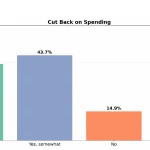
“Towing a trailer with an EV is now possible but still far from practical due to drastically reduced range.”
That’s a summary of Car and Driver’s test of three electric vehicles towing a 29-foot, 6,100-pound camper trailer.
It’s an improvement, actually, because a year ago Car and Driver couldn’t find an EV that could pull more than 5,000 pounds.
Now they can — except EVs used for recreation are not yet ready for primetime.
Consider a person’s thoughts while driving a gasoline or diesel truck towing a camper to the great outdoors.
“I hope we get there before dark.”
“I hope we get a good campsite.”
“I hope we packed everything we need.”
And compare them with what might be the thoughts of an individual towing a trailer with an EV.
Do you think manufacturers can overcome the range limitations of EVs?
Yes: 15% (190 Votes)
No: 85% (1058 Votes)
“I hope we get there before dark. I’d hate to see the truck’s lights drain the battery before we find a charging station.”
“I hope we get a good campsite. Having to stop to continually recharge the truck means we may not.”
“I hope we packed everything we need. And I hope there’s a charging station nearby.”
A major camping trip — especially with children — often can be stressful. Coaxing an electric vehicle along can add to the stress.
Because you can’t go far without having to recharge the battery, and that’s dependent upon finding a charging station that is readily accessible — unlike gas pumps, charging stations require the trailer to be unhitched to allow the truck to access the charger. “A major hassle” is how Car and Driver described that required unhitching.
But there are some positives to newer EVs, according to the publication, which tested a GMC Hummer EV, a Ford F-150 Lightning and a Rivian R1T.
“These new electric pickups are wonderful towing companions,” Car and Driver reported. They’re “aided by massive horsepower and torque that allow for easy merging with the flow of interstate traffic.”
“Their heavy curb weights (between 6855 pounds for the F-150 and 9640 pounds for the Hummer) lend an impressive stability when lugging a three-ton trailer.
“But you won’t want to be going far, as a full battery will take you a mere 100 miles in the Lightning, 110 miles in the R1T, and 140 miles in the Hummer.”
Each of those is less than half of the range of the electric trucks running at 75 mph without a load (230 miles for the Lightning, 280 miles for the R1T and 290 miles for the Hummer).
Speeds in the towing tests were limited to 70 mph.
Like EVs, when you hitch a trailer to a truck powered by an internal combustion engine, range drops by half, according to Car and Driver.
But even with a 2,000-pound trailer, a gas-powered Toyota Tundra can go an estimated 473 miles, according to a test by TheFastLaneTruck.com. In the same test, a Rivian R1T only went 153 miles using 91 percent of its charge.
And there’s another problem, Car and Driver reported — “low-battery warnings start in at roughly 50 miles to empty, when the battery pack is still nearly half full.”
So on top of all the other things on the mind of the EV driver towing a trailer to the wilderness comes this thought: “Why is that low-battery light on? I mean, we haven’t even been on the road for an hour!”
Perhaps in a year Car and Driver will be able to report more improvements to EVs. And perhaps not.
Setting aside the environmental destruction caused by mining for lithium batteries (and the sensitive geopolitics involved), the advocated wasteful scrapping of a well-functioning petroleum infrastructure, the needed development of an electric charging network (and a power grid to support it) and the high costs of electric vehicles, it may be that limitations on such cars and trucks can be traced to their inability to catch on more than a century ago.
That inability can be traced to physics.
Electricity can do a lot. But maybe not in long-haul vehicles.
Despite the hype and political posturing, there may be no way around the economic and practical limitations of EVs.







